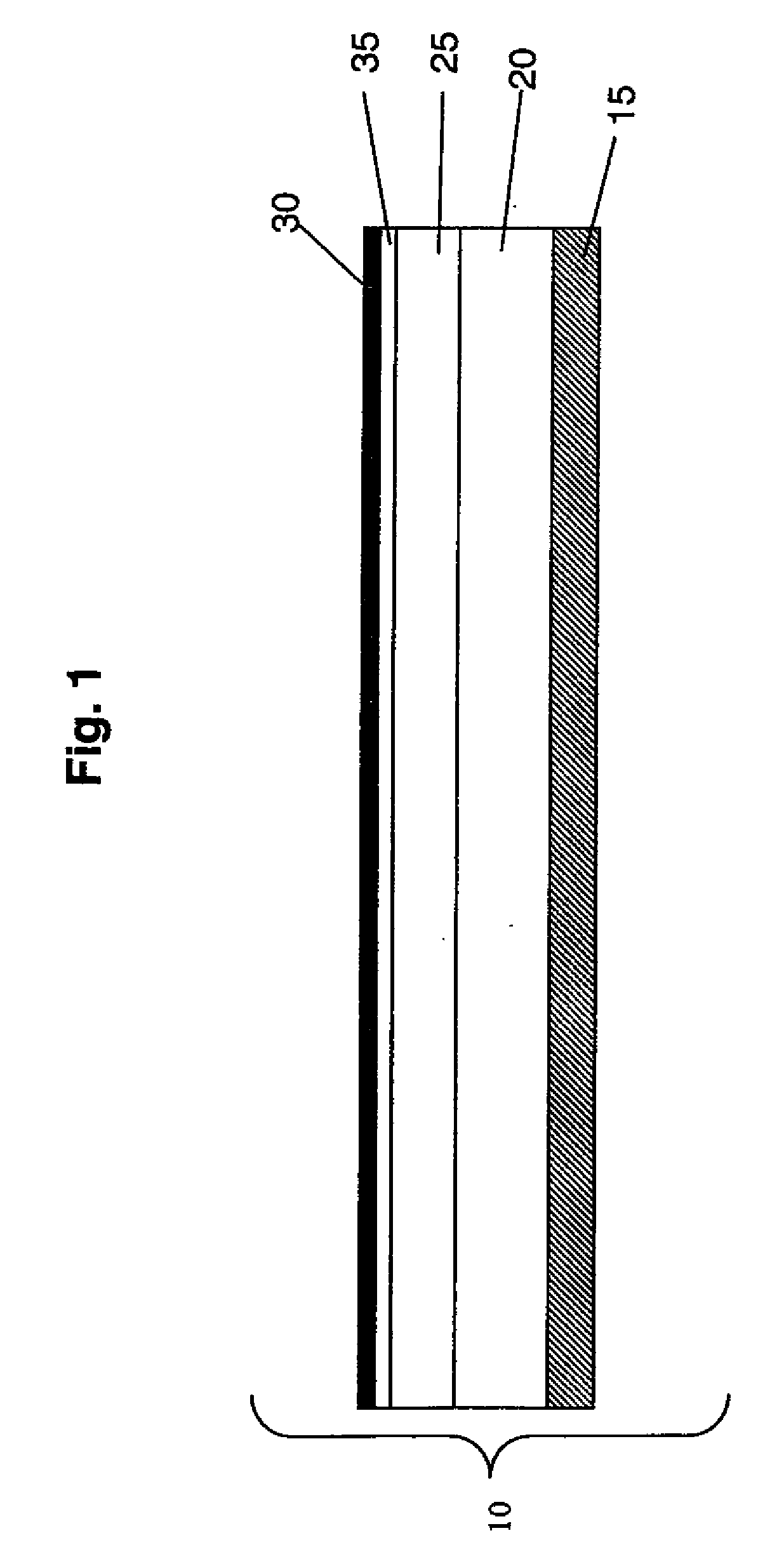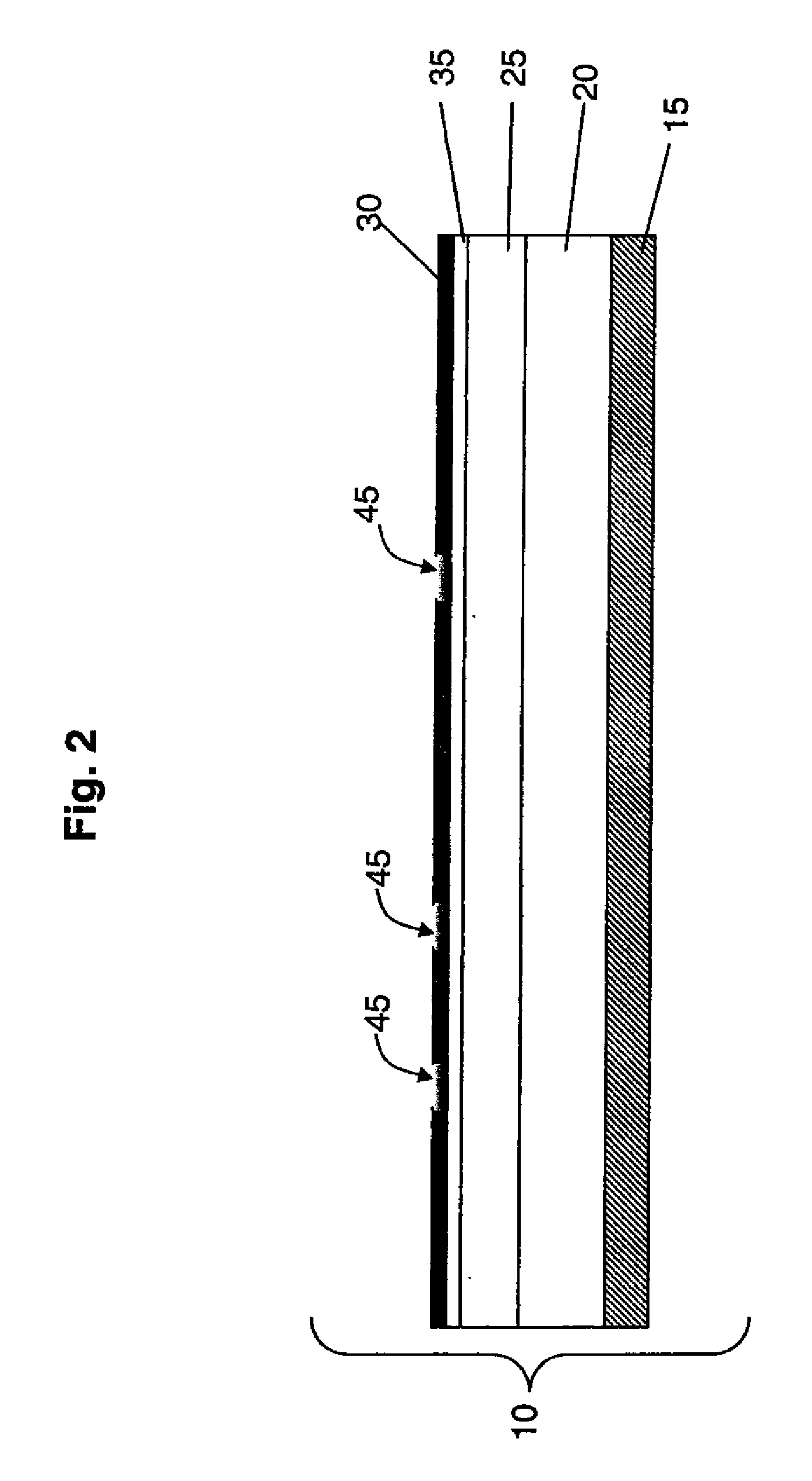Flexographic element and method of imaging
a technology of flexographic elements and printing plates, applied in the field of flexographic elements, can solve the problems of difficult to maintain small dots on flexographic printing plates, physical limitations of relief image creation process in flexographic printing plates, and difficult to print small graphic elements such as fine dots, lines, and even text using flexographic printing elements, etc., to achieve the effect of high throughput for individual imaging apparatus, no loss of small dots, and easy modification
- Summary
- Abstract
- Description
- Claims
- Application Information
AI Technical Summary
Benefits of technology
Problems solved by technology
Method used
Image
Examples
embodiment 1
[0100]The first radiation-sensitive layer could contain Esacure KTO 46 photoinitiator at a concentration of 0.2 g / l making it sensitive to UV radiation between 360 to 400 nm. The second radiation-sensitive layer could contain Esacure KB1 at 0.01 g / l making it sensitive to UV radiation below 320 nm. The IR ablation layer could have the composition described in Table 1 of Example 1 of U.S. Pat. No. 7,279,254 (Zwadlo et al.) that is incorporated herein by reference.
embodiment 2
[0101]The first radiation-sensitive layer could contain Esacure KTO 46 photoinitiator at a concentration around 0.2 g / l making it sensitive to UV radiation between 360 to 400 nm. The second radiation-sensitive layer could contain Esacure KTO 46 at a concentration around 0.01 g / l making it sensitive to UV radiation below 340 nm. The IR ablation layer could have the composition described in Example 1 of U.S. Pat. No. 7,279,254 (noted above).
embodiment 3
[0102]The first radiation-sensitive layer could contain Esacure KTO 46 Photoinitiator at a concentration around 0.2 g / l making it sensitive to UV radiation between 360 to 400 nm. The second-radiation sensitive layer could contain Spectra Group H-Nu-IR-780 photoinitiator with peak sensitivity near 765 nm. The IR ablation layer could have the composition described in Table 1 of Example 1 of U.S. Pat. No. 7,279,254 (noted above).
PUM
 Login to View More
Login to View More Abstract
Description
Claims
Application Information
 Login to View More
Login to View More - R&D
- Intellectual Property
- Life Sciences
- Materials
- Tech Scout
- Unparalleled Data Quality
- Higher Quality Content
- 60% Fewer Hallucinations
Browse by: Latest US Patents, China's latest patents, Technical Efficacy Thesaurus, Application Domain, Technology Topic, Popular Technical Reports.
© 2025 PatSnap. All rights reserved.Legal|Privacy policy|Modern Slavery Act Transparency Statement|Sitemap|About US| Contact US: help@patsnap.com



